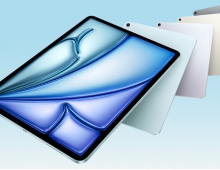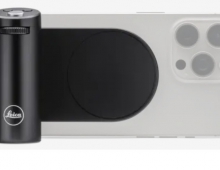
Apple Continues Familiar Design and Pricing Strategy with iPhone 5c
The iPhone 5c turned out to follow Apple's familiar formula, combining premium pricing with a hardware design almost completely identical to the original iPhone 5, according to preliminary results from a teardown analysis by IHS.
The low-end model of Apple's iPhone 5c with 16 gigabytes (GB) of NAND flash memory carries a bill of materials (BOM) of $166, based on a physical dissection of the production. The cost rises to $173 when the $7 manufacturing expense is added in. The 32-GB model carries a combined cost of $183.
While this is considerably less than the $197 BOM and manufacturing cost for the original 16-GB iPhone 5 based on the final results of the IHS teardown conducted one year ago, it?s still on the high end for a smartphone. To attain the cost and pricing required to merit low-end pricing of $400, while maintaining Apple?s customary high hardware margin, the combined BOM and manufacturing expense for the iPhone 5c would have had to amount to about $130.
"Many expected Apple to take an affordable strategy with the iPhone 5c, producing a lower-cost smartphone that would be priced at around $400 in order to address developing markets, such as China," said Wayne Lam, senior analyst for wireless communications at IHS. "However, the reality of the iPhone 5c is completely different, with Apple offering a phone with a $173 BOM and manufacturing cost, and a $549 price tag - without subsidies. Once again, Apple has stuck to its old tried-and-true formula of optimizing its iPhone hardware gross margins to attain maximum profitability."
The table presents the preliminary BOM based on a physical dissection of the iPhone 5c conducted by the IHS Teardown Analysis Service. Note that the teardown assessment is preliminary in nature, accounts only for hardware and manufacturing costs and does not include other expenses such as software, licensing, royalties or other expenditures.

Just as Apple's pricing strategy for the 5c is familiar, so are the phone's electronic content and design.
"The iPhone 5c is basically an iPhone 5 in a plastic disguise," said Andrew Rassweiler, senior director, cost benchmarking services for IHS. "Just as in the original iPhone 5, the 5c uses an Apple A6 processor, a 4-inch retina display, and low-power Double Data Rate 2 (DDR2) DRAM - among other commonalities. Because of this, the iPhone 5c benefits from the normal cost reductions that typically occur for electronic devices during the period of a year. The combination of the design and component reuse - and the plastic enclosure - has allowed Apple to offer a less expensive version of the iPhone, although it's still not cheap enough to be a true low-cost smartphone."
The display module in the 5c carries a cost of $41, down 7 percent from $44 one year ago. "Maintaining the same specification and the same suppliers for the panels as the iPhone 5 has helped Apple hold the line on its display costs for the 5s," said Vinita Jakhanwal, director of mobile and emerging displays and technology at IHS. "Japan Display Inc., LG Display and Sharp have been the main display suppliers for the iPhone 5 for more than a year, allowing Apple to provide them the opportunity to enhance their manufacturing yields and efficiencies."
The biggest difference between the iPhone 5c and the original iPhone 5 lies in the radio frequency (RF) transceiver, which has been updated to support more 4G Long Term Evolution (LTE) bands. The 5c uses Qualcomm's WTR1605L RF transceiver, which supports up to seven simultaneous LTE connections during operations. The iPhone 5 used the older RTR8600L RF transceiver, also from Qualcomm, that supported only up to five active LTE bands.
While this is considerably less than the $197 BOM and manufacturing cost for the original 16-GB iPhone 5 based on the final results of the IHS teardown conducted one year ago, it?s still on the high end for a smartphone. To attain the cost and pricing required to merit low-end pricing of $400, while maintaining Apple?s customary high hardware margin, the combined BOM and manufacturing expense for the iPhone 5c would have had to amount to about $130.
"Many expected Apple to take an affordable strategy with the iPhone 5c, producing a lower-cost smartphone that would be priced at around $400 in order to address developing markets, such as China," said Wayne Lam, senior analyst for wireless communications at IHS. "However, the reality of the iPhone 5c is completely different, with Apple offering a phone with a $173 BOM and manufacturing cost, and a $549 price tag - without subsidies. Once again, Apple has stuck to its old tried-and-true formula of optimizing its iPhone hardware gross margins to attain maximum profitability."
The table presents the preliminary BOM based on a physical dissection of the iPhone 5c conducted by the IHS Teardown Analysis Service. Note that the teardown assessment is preliminary in nature, accounts only for hardware and manufacturing costs and does not include other expenses such as software, licensing, royalties or other expenditures.

Just as Apple's pricing strategy for the 5c is familiar, so are the phone's electronic content and design.
"The iPhone 5c is basically an iPhone 5 in a plastic disguise," said Andrew Rassweiler, senior director, cost benchmarking services for IHS. "Just as in the original iPhone 5, the 5c uses an Apple A6 processor, a 4-inch retina display, and low-power Double Data Rate 2 (DDR2) DRAM - among other commonalities. Because of this, the iPhone 5c benefits from the normal cost reductions that typically occur for electronic devices during the period of a year. The combination of the design and component reuse - and the plastic enclosure - has allowed Apple to offer a less expensive version of the iPhone, although it's still not cheap enough to be a true low-cost smartphone."
The display module in the 5c carries a cost of $41, down 7 percent from $44 one year ago. "Maintaining the same specification and the same suppliers for the panels as the iPhone 5 has helped Apple hold the line on its display costs for the 5s," said Vinita Jakhanwal, director of mobile and emerging displays and technology at IHS. "Japan Display Inc., LG Display and Sharp have been the main display suppliers for the iPhone 5 for more than a year, allowing Apple to provide them the opportunity to enhance their manufacturing yields and efficiencies."
The biggest difference between the iPhone 5c and the original iPhone 5 lies in the radio frequency (RF) transceiver, which has been updated to support more 4G Long Term Evolution (LTE) bands. The 5c uses Qualcomm's WTR1605L RF transceiver, which supports up to seven simultaneous LTE connections during operations. The iPhone 5 used the older RTR8600L RF transceiver, also from Qualcomm, that supported only up to five active LTE bands.





















